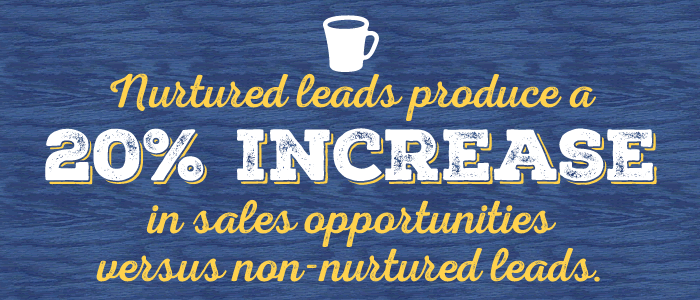It can be fun to browse through different statistics, especially when they can help you become a better salesperson. But sometimes, the numbers are easily forgotten, and before you know it, you never really got anything from it.
In this article, we’re going to go through 13 sales statistics and fun facts, and then we’ll break down what it actually means for you so that you can start applying all this knowledge today.

#1: At any given time, only 3% of your market is actively buying. 56% are not ready, 40% are poised to begin.
Life lesson: Don’t freak out if you think your marketing efforts aren’t working. They’re leaving an impression to an audience that will eventually be ready to buy.

#2: 44% of salespeople give up after one follow-up. But 80% of sales require five follow-ups.
Life lesson: Don’t stop following up. Keep your name in front of people, and the sale will eventually come.

#3: If you follow up with web leads within 5 minutes, you’re 9 times more likely to convert them.
Life lesson: Have an email automation set up. If someone subscribes to your newsletter or fills out your contact form, have an autoresponder let them know that you’ll be with them within 24 hours. (Don’t think a website is necessary? Read this.)

#4: 63% of people requesting information on your company today will not purchase for at least three months – and 20% will take more than 12 months to buy.
Life lesson: People want to feel you out before committing to anything. Create a website that provides information, and focus on making personal connections with people. The sale will progress naturally.

#5: Nurtured leads produce, on average, a 20% increase in sales opportunities versus non-nurtured leads.
Life lesson: Relationships matter. Stay in touch with prospects and above all, make a connection with them. Not every interaction should be about selling something new.

#6: After a presentation, 63% of attendees remember stories. Only 5% remember statistics.
Life lesson: When you’re pitching a product, tell a story. Explain how this cancer policy saved your dad when he got diagnosed with cancer. Tell about a friend who ended up in the nursing home without long-term care insurance. Stories resonate. Don’t have one? Paint a picture of what could happen, or use someone else’s story.
If you use the Client Needs Assessment, also called a Fact Finder, you’ll also be able to draw out stories from your client. The questions in the CNA are very psychologically charged, and they’re designed to get your client talking.

#7: Visuals are processed 60,000x faster in the brain than text.
Life lesson: Use supporting materials such as infographics to capture the attention of your prospects. The Short-Term Care Point of Sale Flyer is a good example. You can take a look at it in the Short-Term Care Kit.

#8: 70% of people make purchasing decisions to solve problems. 30% make decisions to gain something.
Life lesson: When pitching a product, focus on what consumers have to lose, not what they have to gain. For example, if you’re pitching a long-term care policy, focus on the assets your clients will lose rather than the coverage they will gain.

#9: The best times to email prospects are 8am and 3pm.
Life lesson: If you like to send emails in the early morning or evening, use an email scheduling service like Boomerang to ensure that your emails are more likely to be read.

#10: 91% of customers say they’d give referrals. Only 11% of salespeople ask for referrals.
Life lesson: Always ask for referrals!

#11: The top salespeople use LinkedIn at least 6 hours per week.
Life lesson: Use LinkedIn for prospecting.

#12: 82% of buyers viewed at least 5 pieces of content from the winning vendor.
Life lesson: Create a website with helpful, written content about what you do and the products you offer.

#13: Retaining current customers is 6 to 7 times less costly than acquiring new ones.
Life lesson: Don’t skip annual policy reviews. Keep in touch with your customers. You don’t want to lose them after all that hard work, do you?





